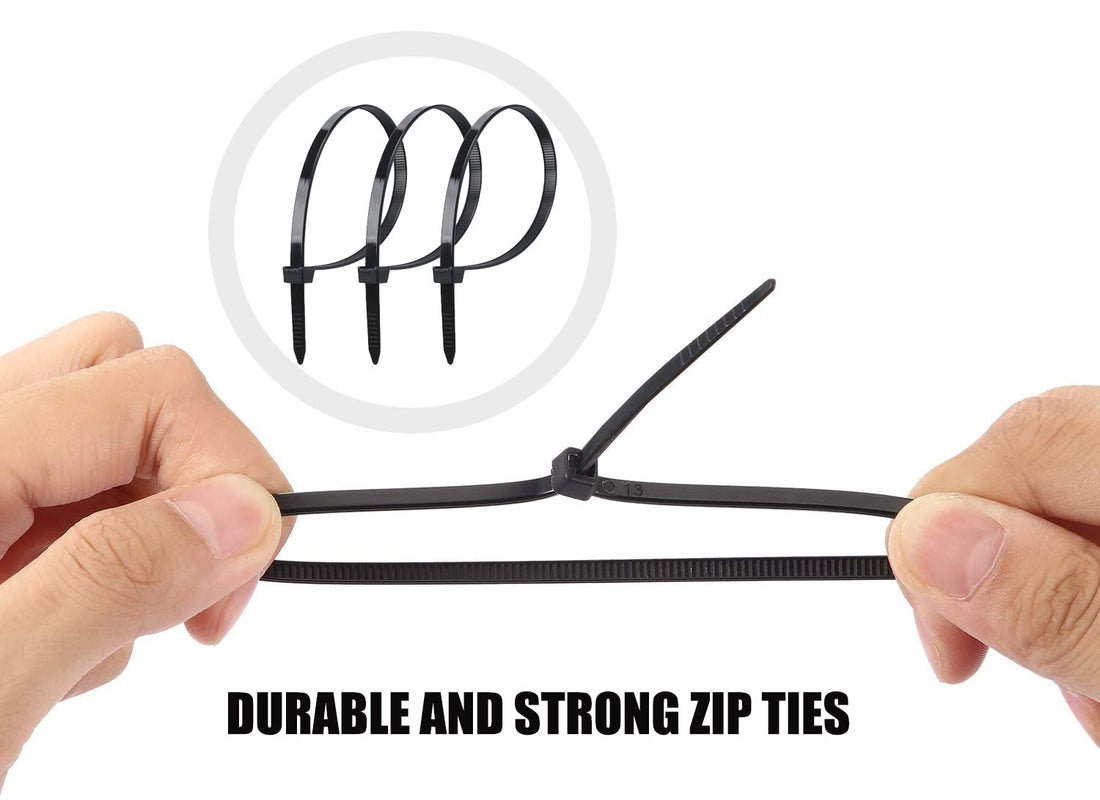
What is Cable Ties How and Where it is Useful?
Share
What Are Cable Ties?
Cable ties, also known as zip ties or tie wraps, are a type of fastening device used to bundle or secure cables, wires, or other items together. They typically consist of a flexible strap and a locking mechanism that allows them to tighten around the items they are securing.
Material of Cable Ties:
Cable ties are generally made from the following materials:
-
Nylon (Polyamide): The most common material for cable ties. It is durable, flexible, and has good resistance to abrasion, chemicals, and temperature variations. Nylon cable ties are also UV-resistant and have a high tensile strength.
-
Stainless Steel: These ties are used for heavy-duty applications where high resistance to corrosion and heat is necessary. Stainless steel ties are often used in extreme environments.
-
Polypropylene: This material is less common but is used for specific applications that require a more lightweight or chemical-resistant tie.
-
Polyethylene: Used in some specific cable ties, particularly when greater flexibility is needed.
-
Other Special Materials: Some cable ties may also be made from materials designed for high-temperature environments (e.g., silicone or heat-resistant plastics) or conductive materials for electrostatic discharge (ESD) protection.
How Cable Ties Work:
Cable ties function by using a ratcheting mechanism. They have a small "teeth" or ridges on one side of the strap and a locking head at the other end. When the tie is threaded through the locking head and pulled tight, the teeth grip the strap, holding it securely in place. Once the tie is tight, the locking mechanism ensures it does not loosen unless intentionally cut or released.
Where Cable Ties Are Useful:
Cable ties are versatile and useful in many industries and applications:
- Electrical Wiring: To bundle and secure electrical cables, preventing tangling and improving safety.
- Automotive: Used for securing wiring and hoses in cars, trucks, and other vehicles.
- Home and Office Organization: For organizing cables, such as phone chargers, computer cables, and other household wiring.
- Construction and Industrial: Tying and organizing materials like pipes, hoses, or tubing.
- Packaging: Used to bundle items together securely during shipping and storage.
- Gardening: Securing plants or organizing garden tools and irrigation hoses.
- Telecommunications: Organizing data cables, fiber optics, and other delicate wiring in communication networks.
- Security and Safety: Used to lock gates, doors, and other objects in some security applications.
Features of Cable Ties:
-
Easy to Use: They can be easily tightened by hand and do not require tools for most applications.
-
Adjustable: The length of the cable tie can be adjusted before tightening. Once secured, the tie does not loosen without cutting.
-
Variety of Sizes: Cable ties come in various lengths and widths to accommodate different sized bundles and materials.
-
UV Resistance: Some cable ties, especially those made from nylon, are UV-resistant, making them suitable for outdoor use without degrading from sunlight exposure.
-
High Strength: Depending on the material, cable ties can handle various weight capacities and can withstand significant forces before breaking.
-
Temperature Resistance: Cable ties can be designed to withstand both extreme heat and cold, with certain versions rated for high temperatures or low temperatures.
-
Color Options: Available in different colors for easy identification and organization (e.g., color-coding wiring or cables).
-
Non-Conductive: Most cable ties made of nylon or similar materials are non-conductive, making them safe to use around electrical wiring.
-
Releasable Versions: Some cable ties are designed to be reusable or releasable, which allows for adjustments or removal after installation.
-
Locking Mechanism: The locking mechanism ensures that the cable tie stays securely fastened until it's deliberately cut or released.
-
Weather Resistance: Depending on the material, they may also be resistant to harsh weather, chemicals, and oils, making them suitable for outdoor or industrial environments.
In summary, cable ties are versatile, durable fasteners made from materials like nylon, stainless steel, and other specialized plastics. They are used across various industries to bundle, organize, and secure items like wires and cables. Their design features, such as ease of use, strength, and resistance to environmental factors, make them highly useful in both everyday and professional settings.